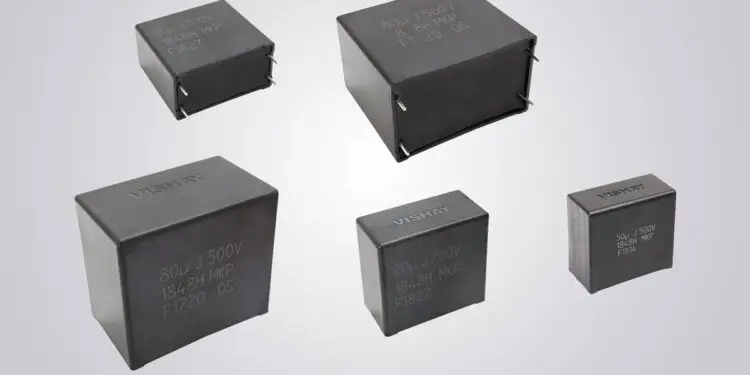Vishay Intertechnology, Inc. introduced a new series of Automotive Grade DC-Link metallized polypropylene film capacitors optimized for high humidity environments.
The Vishay Roederstein MKP1848H DC-Link is Vishay’s first series of AEC-Q200 qualified DC-Link film capacitors to withstand temperature humidity bias (THB) testing — 85 °C, 85 % relative humidity for 1000 hours at rated voltage — without altering its electrical characteristics.
The radial capacitors released today are designed to ensure extremely stable capacitance and ESR values over a long service life under harsh environmental conditions during operation.
Applications
The robust devices are ideal for output filtering in
- automotive on- and off-board chargers and DC/DC converters
- power converters for solar farms
- auxiliary power supplies in wind energy generators
- industrial power supplies and motor drives
- welding equipment
- UPS
MKP1848H DC-Link series capacitors features
- rated capacitance from 1 µF to 80 µF
- low ESR down to 3 mΩ
- high ripple current capabilities up to 25.1 A
- rated voltages of 500 VDC, 700 VDC, 800 VDC, 920 VDC, and 1200 VDC at +85 °C.
- RoHS-compliant
- halogen-free and Vishay Green.
Samples of the MKP1848H DC-Linkseries are available now. Production quantities will be available in Q3 2020 with a lead time of 20 weeks.































